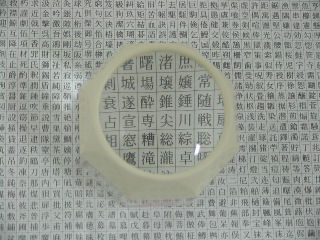
Chinese language has the "four tones" so that Chinese people can express four meanings with only one syllable. When Kanji (Chinese characters) were brought into Japan, the four tones were lost. As a result, there are many Kanji characters that have the same sound regardless of different shapes and meanings. Thus, telling one designated Kanji character out of many homonyms is a challenge for Japanese screen readers. To solve this problem, screen readers adopt Shosaiyomi (explanatory expressions).
Shosaiyomi mainly uses two strategies. One is the use of idomatic set of Kanji characters. For example, there are five Kanji characters whose pronunciation is "go." Even so, if you hear the explanation of "go as in juku-go (idioms)," you can tell which it is as there is only one "go" that is used in that idiom. Another strategy is the combination of two different readings, "on" and "kun." Most Kanji characters have Japanese pronunciation (kun reading) aside from original Chinese syllable (on reading) and the combination of these reduces the number of selections. For example, although there are nearly one hundred Kanji characters that are pronunced as "ko" by on reading, only one character is pronounced as "takai (high)." So the explanation of "takai, ko" identifies that character correctly.
These days screen reader users claim that some expressions are difficult to understand. With this background, we arranged a classification of shosaiyomi and conducted a Kanji writing test using actual shosaiyomi with primary school students as the subjects. As a result, it is shown that the primary factor in lower correct rates is the use of words that are out of their vocabulary. Secondary factor is the use of idiomatic sets that have homonyms.
People who are not familiar about Kanji can learn them at the Kanji site.
Last updated: April 14, 2009
Copyright (C) 2003-2009 Tetsuya WATANABE